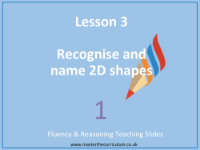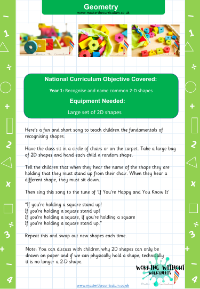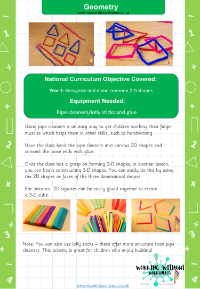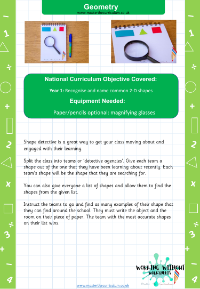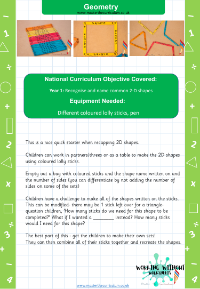Geometry Shape - Recognise and name 2D shapes - Planning
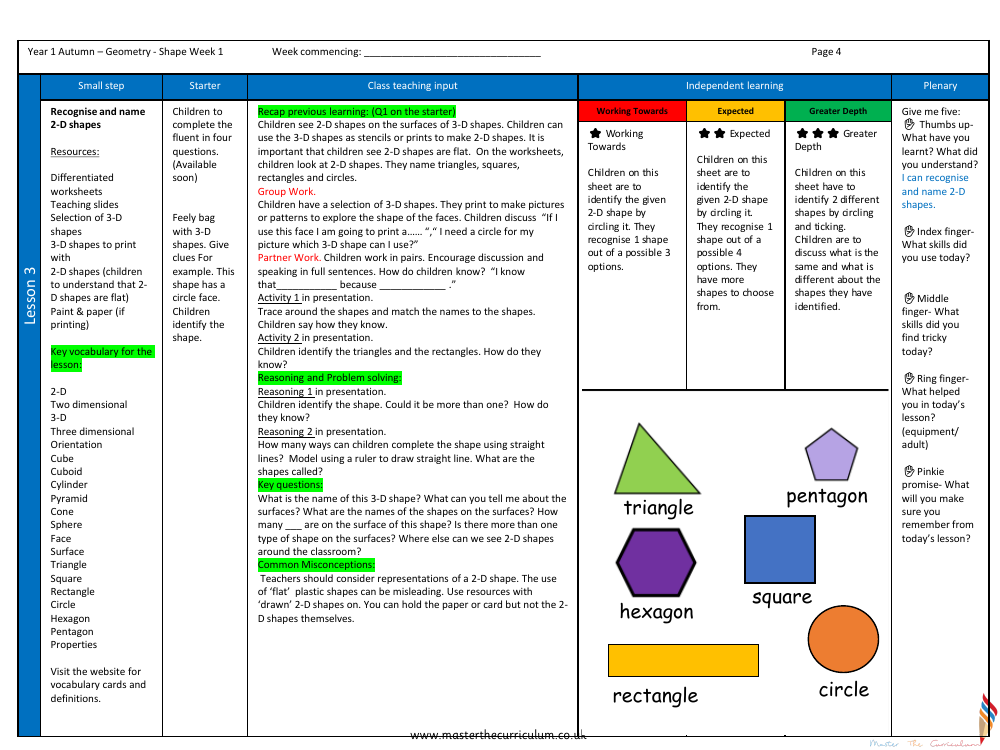
Maths Resource Description
In the first lesson of the Geometry - Shape unit for Year 1, the objective is to help students recognise and name two-dimensional (2-D) shapes. To achieve this, a variety of resources such as differentiated worksheets, teaching slides, and a collection of three-dimensional (3-D) shapes are employed. The lesson begins with a starter activity where children use their sense of touch to identify 3-D shapes from a 'feely bag' based on clues about the shapes' faces. The class teaching input focuses on the concept that 2-D shapes are flat and can be seen on the surfaces of 3-D shapes. Children then engage in group work, using 3-D shapes to create prints and patterns, which helps them to explore and discuss the shapes of the faces they are using.
Partner work encourages children to articulate their understanding by explaining their reasoning in full sentences. Two activities in the presentation guide the students to trace around shapes and match names to shapes, as well as to identify triangles and rectangles, explaining how they know these shapes. The lesson also includes reasoning and problem-solving tasks where children are challenged to identify shapes that could have multiple interpretations and to explore different ways to complete shapes using straight lines. Key questions prompt students to think about the names and properties of 3-D shapes and their surfaces, as well as to observe 2-D shapes in their classroom environment. To conclude, the plenary addresses potential misconceptions and ensures that children understand that 2-D shapes are flat and not to be confused with physical objects. Differentiated activities cater to varying levels of understanding, from working towards recognising a single shape out of three to achieving greater depth by identifying and comparing two different shapes.

